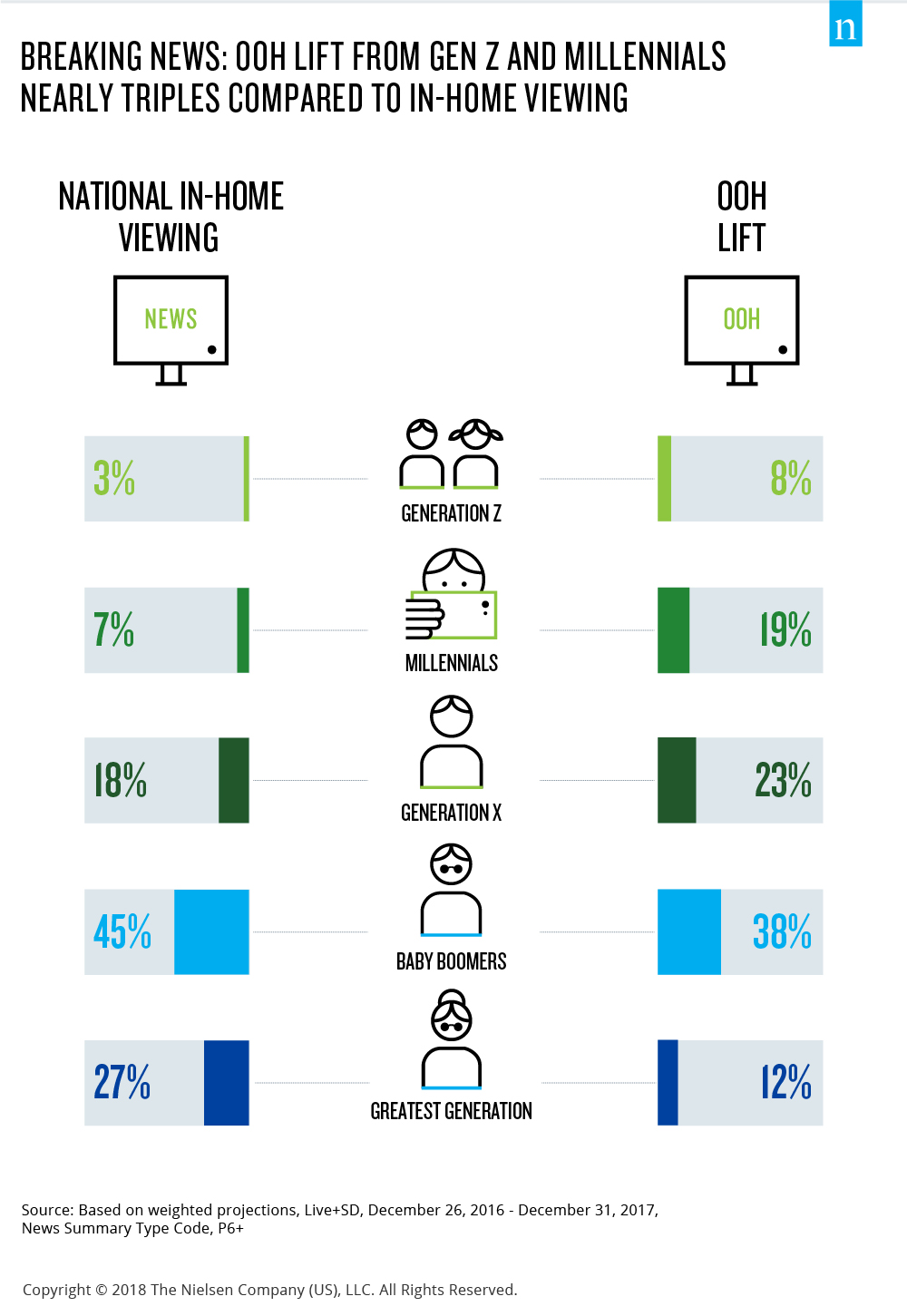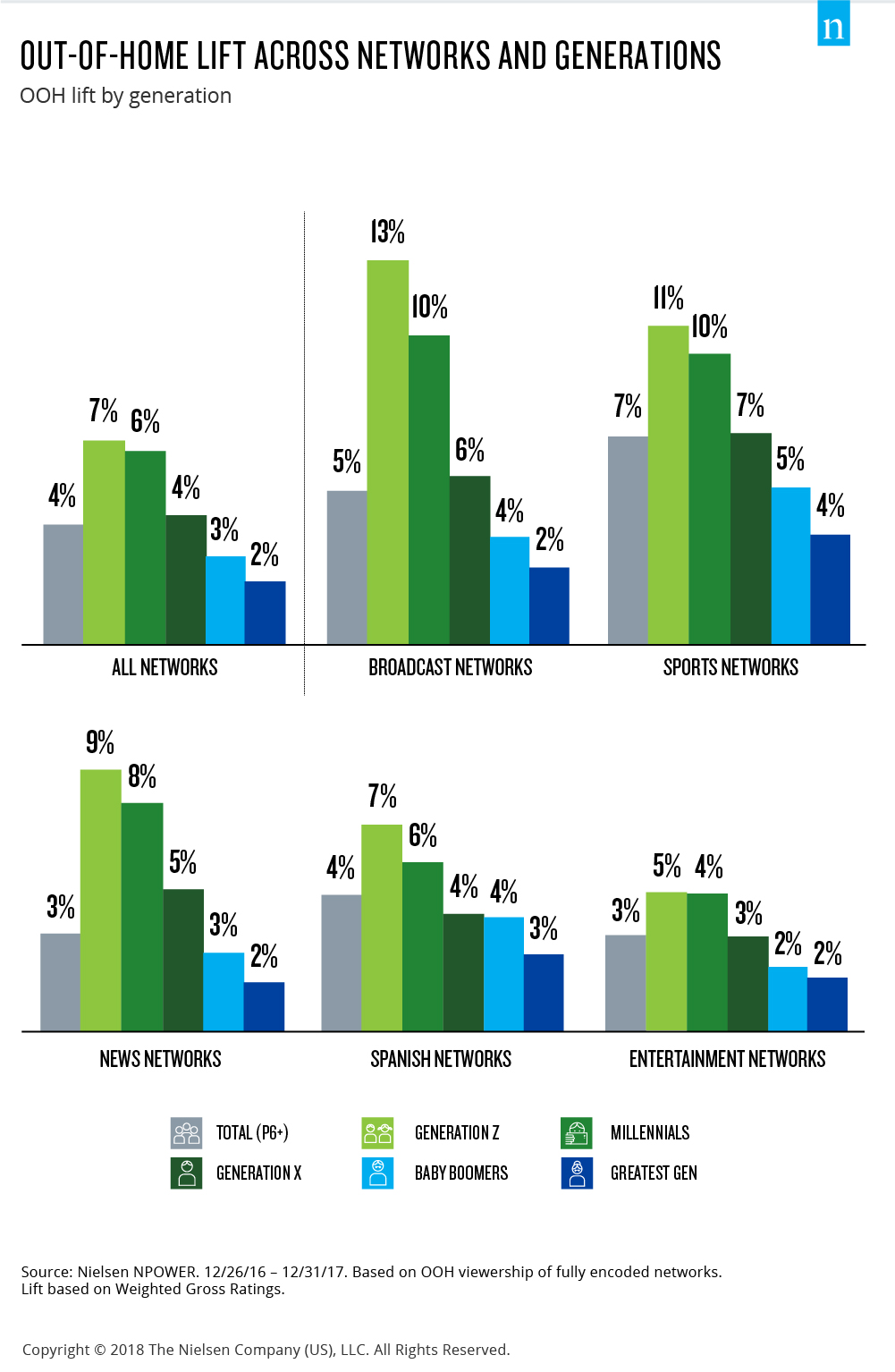It’s no secret that younger consumers are cutting the cord and finding new ways to watch video via an ever-growing roster of nascent technologies. The common belief is that these viewers are switching to subscription video on-demand (SVOD) services or viewing content on their phone with no interest in linear TV. But this assumption couldn’t be further from the truth.
While it’s true that younger consumers are driving the growth of streaming, especially through their mobile devices, they are still seeking high-quality video on television. The major trend, however, is that they’re stepping away from the comfort of their homes to tune in as they grow into independent decision-making consumers of media (and goods and services, too). That’s where Nielsen Total Audience comes into play, which measures across platforms and devices. Nielsen’s Total Audience Measurement Framework is at the center of this trend capturing, measuring and reporting all of the ways people are viewing content.
To find out more about this shift, Nielsen leveraged the out-of-home TV viewing capability of its measurement framework to analyze full-year 2017 TV viewing data of persons 6 and older. The results showed that 39% of all OOH viewing came from Generation Z (Gen Z) and Millennial consumers. That’s 14% higher than national in-home viewing for these demographic segments.
Generation Z and Millennial consumers contribute 39% of all out-of-home video viewing
When we looked at specific program genres, such as news and sports, OOH viewing continued to deliver incremental audience lifts, especially among Millennials and Gen X, both of which are key buying demos. For news, this is even more true because for national in-home viewing Baby Boomers and the Greatest Generation comprise 72% of the audience. This older audience makes up half of the incremental OOH audience, a 22% drop. What’s more impressive is that for Gen Z and Millennials the share of incremental OOH viewing for news, as compared to national in-home viewing, nearly tripled. Furthermore, the OOH share of viewing from Generation X (Gen X) jumped from 18% for national in-home viewing to 23% for OOH.

Sports programs follow a similar story line, with nearly half (45%) of OOH viewing coming from Gen Z and Millennials. The incremental OOH contribution from Gen Z and Millennials increased by nearly 10% among each demo segment. In fact, OOH viewing of sports content is 15% more likely to come from persons 18-49 (a primary buying demo), than from the national in-home viewing audience.
While news and sports networks are seeing a healthy OOH lift for Gen Z and Millennials, broadcast networks are seeing even higher lift for the same demo groups. OOH TV viewing is also delivering for Spanish and entertainment networks. These networks are seeing 3% to 7% OOH lift from Gen Z, Millennials and Gen X.

For decades, media owners and buyers knew that OOH audiences existed, but they’ve never been able to quantify and transact on these coveted consumers. Over the past year, new OOH insights into these on-the-move consumers has fueled a broader conversation about the opportunities that OOH audiences present for both buyers and sellers. Whether it’s reaching an OOH audience that is 6% more likely to be affluent (household incomes over $100,000) for persons 18-49 or achieving a significant lift for key genre and demos, OOH insights are providing clarity and opportunity to deliver increased audiences to media plans.
What’s more, having a true line of sight into the out-of-home consumer provides advertisers a means of connecting with younger audiences. In fact, OOH is a viable way to reach Gen Z and Millennials as these highly social generations have two-times higher OOH percent lifts than Baby Boomers and the Greatest Generation.



